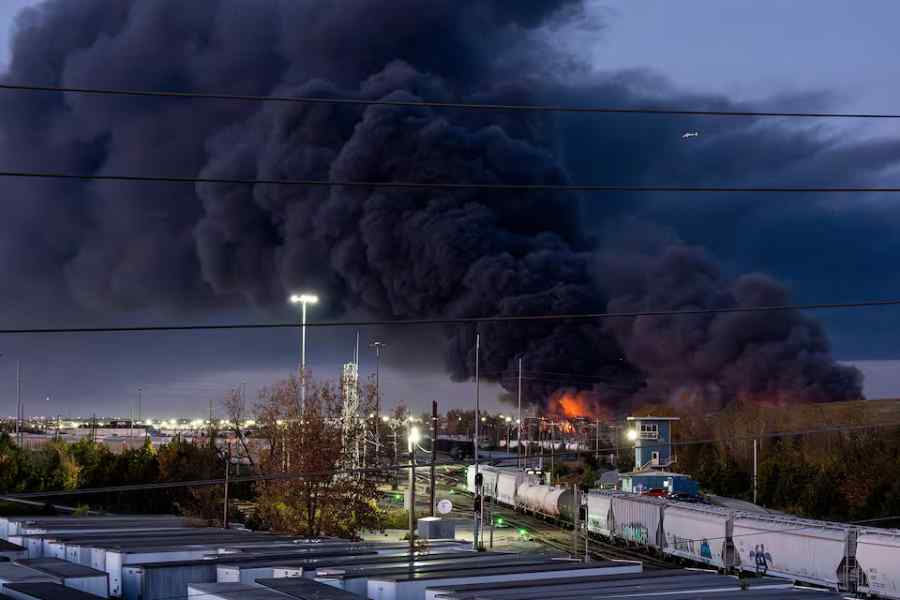 |
| Chairman of Atomic Energy Regulatory Board SS Bajaj (second from left) at an event in Bhubaneswar. Telegraph picture |
Bhubaneswar, Nov. 24: Strict implementation of safety norms can ensure better and safer industrial development, feels chairman of the Atomic Energy Regulatory Board S.S. Bajaj.
The scientist, who was here today to inaugurate a three-day safety meet of occupational health professionals, said these norms were important for a state like Odisha, where rapid industrialisation was taking place.
Though the board specialised in radiation related safety issues and common industrial safety norms such as putting industrial workers on high platforms without any corresponding support system, helmets and safety belts should be a must, said Bajaj.
“Following standard industrial safety norms helps improve productivity. It minimises loss of human resources and injuries because of industrial accidents,” said Bajaj, who will have a look at the safety arrangements at the Orissa Sands Complex, a unit of Indian Rare Earths Limited producing rare earth compounds such as thorium nitrate and thorium oxide, tomorrow.
Being non-toxic, rare earth materials are used in enamel painting on a wall, a piece of paper with glowing white finish or a white tablet. The non-toxic rare earth metals are used in biomedical applications for better drug delivery as they do not create any physiological problem or side effects. On the other hand, rare earth such as titanium, in its pure metallic and alloy forms, is used in aero-space, defence applications, chemical and related metallurgical industries.
Bajaj said: “The board is also associated with certifying safety norms even in X-ray units, cath labs in cardiac care facilities and CT scan machines. X-ray units have very less chances of radiation hazards. However, the cath labs and CT scan units radiate more. The experts and paramedics working there are issued radiation badges. They are periodically sent to the laboratories for safety-checking studies. However, for the industrial units working with radiation related hazards, monthly inspections are needed as the threat perception is high.”
“Moreover, the regional cancer treating centres with radiation therapy are also prone to radiation hazards as they use cobalt radiation to treat cancer growth. The board plays an important role in monitoring the threat.”
Sources said more than 20 existing reactors, seven reactors under construction, nuclear fuel complexes, ore-processing units, research and development laboratories are under regular inspection. Trained experts are conducting the inspection.










